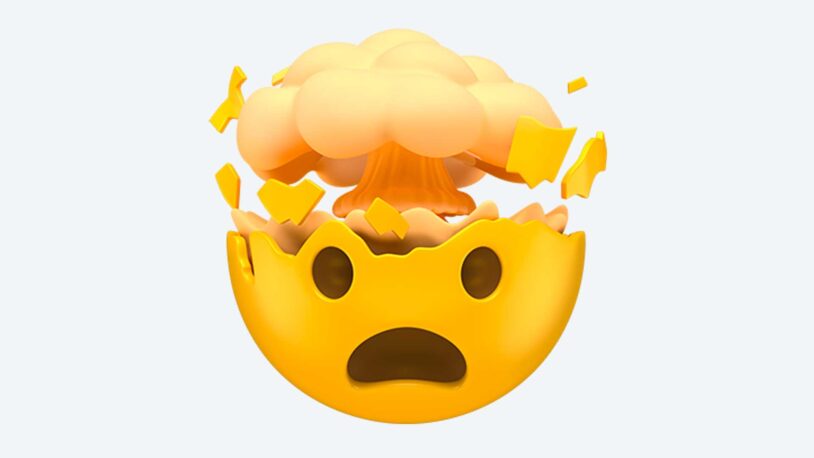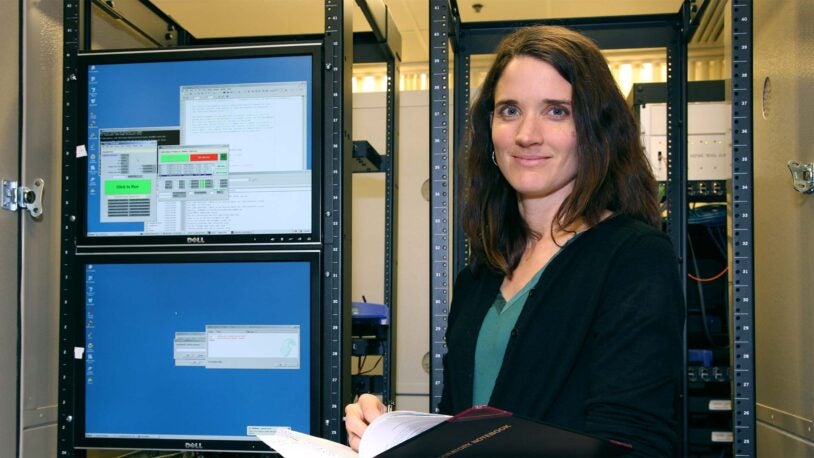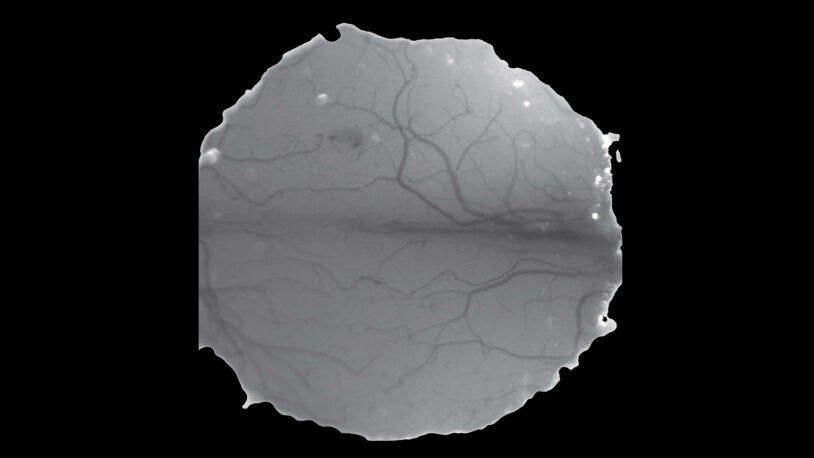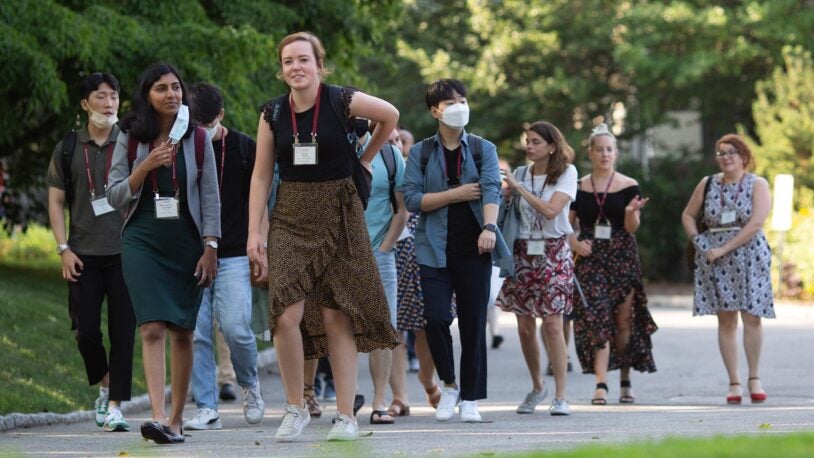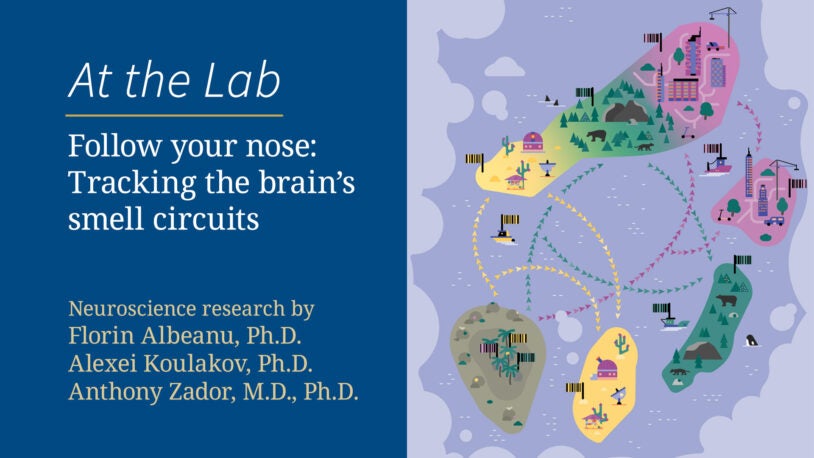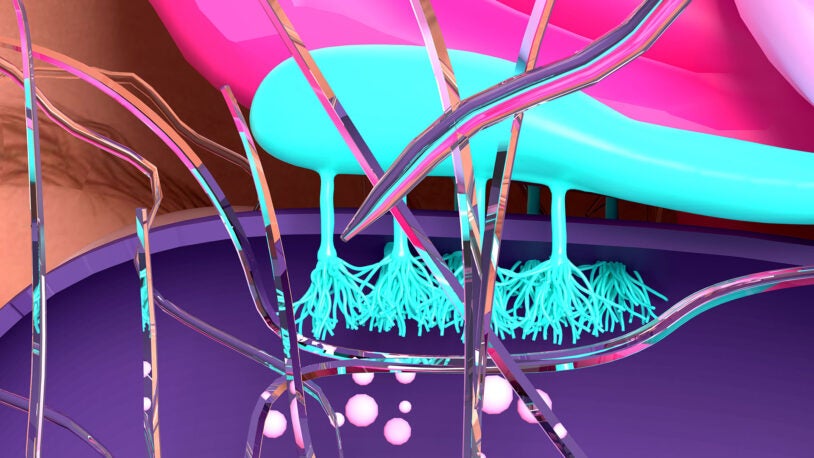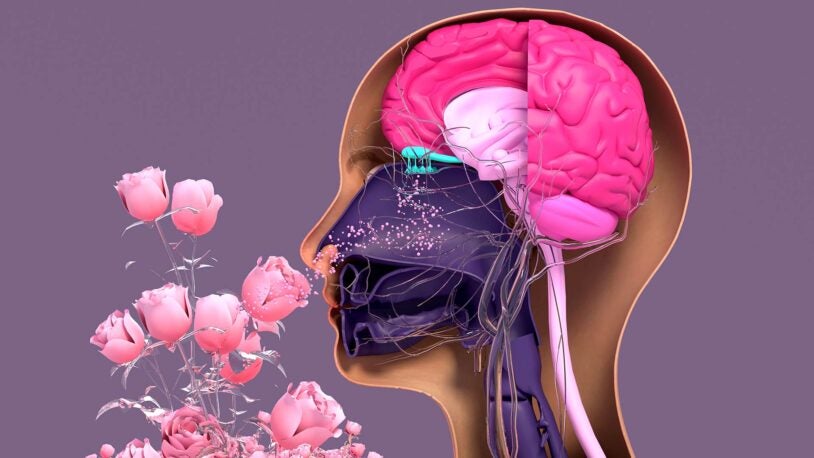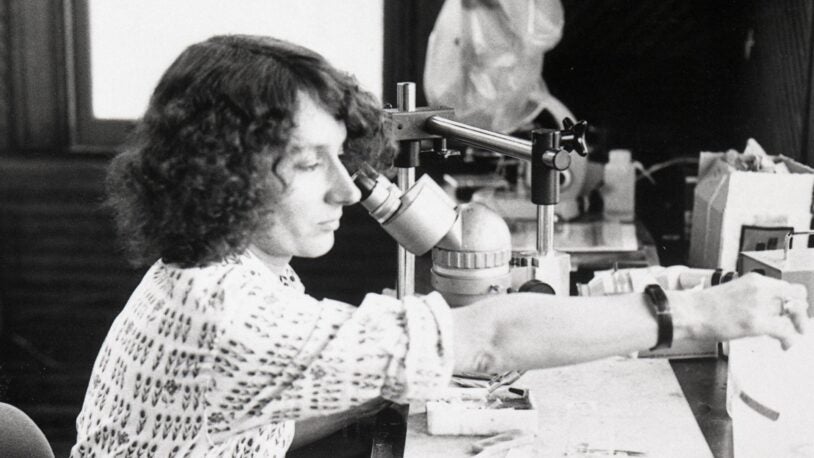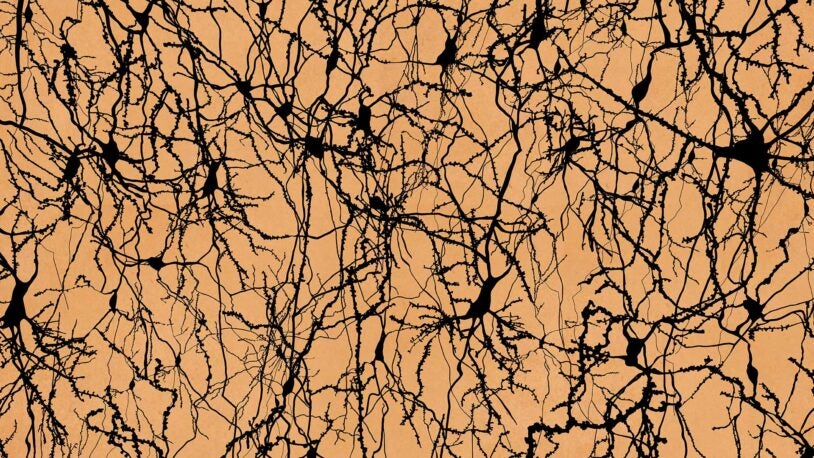
The broad scope of our research is understanding the algorithms the brain uses to relate actions to perception by: 1) determining how the brain generates sensorimotor predictions via internal models of the world, and computes error signals in changing environments, and 2) discovering the logic of the odor space and the neural representations underlying olfactory perception.
We take advantage of expertise in behavioral analysis, computational and systems neuroscience via synergistic interactions with other CSHL groups. Recent and current projects have been aimed at understanding: the reciprocal relationship between sensation and action, the circuit-level decoding mechanisms of specific odor features, and the wiring logic of olfactory system, including the interplay between feedforward and feedback signals via parallel processing loops.
We leverage closed-loop behaviors in rodents and large-scale optical imaging, optogenetic manipulations and electrode recordings to identify brainwide neuronal circuits that mediate egocentric predictions of sensory inputs given specific motor actions, as well as the basis set (red-green-blue analogs) of olfactory perception. By comparing across sensory modalities (olfaction, vision, audition), we also aim to distinguish between neuronal circuits that predict moment-to-moment changes in sensory input, from general-purpose prediction systems that encode more abstract models of the world.
Towards finding the basis set of olfactory perception, taking advantage of behavioral analysis and patterned optogenetic manipulations, we search for the algorithms and circuit-level decoding mechanisms of specific odor features. We investigate the function of neural circuits in the olfactory stream (olfactory bulb, cortex, striatum), and the inputs these receive from motor and association neocortical areas in wild type mice and models of psychiatric disorders. We use high throughput DNA barcoding tools for mapping neuronal connectivity to understand the wiring logic of olfactory system, including the interplay between feedforward and feedback signals and their relationship to odorant receptors.
A perception quiz to blow your mind
March 26, 2025
Ready to think differently about how you see, smell, hear, taste, touch, and make sense of the world around you?
Anne Churchland donates $50K prize to CSHL student
March 19, 2025
The donation, made possible by the National Academy of Sciences, supports Zarmeena Dawood, a neuroscientist and M.D.-Ph.D. student in the Albeanu lab.
A hearing aid for … your nose?
January 30, 2025
CSHL Professor Florin Albeanu and postdoc Diego Hernandez Trejo have found a feedback loop in the brain that may help us make sense of new sensations.
The CSHL School of Biological Sciences’ class of 2024
May 5, 2024
The School of Biological Sciences awarded Ph.D. degrees to 11 students this year. Here are some stories and reflections from their time at CSHL.
President’s essay: Bringing bold visions to life
May 26, 2023
CSHL President & CEO Bruce Stillman sees the Laboratory as a global hub for scientific expertise and a powerful launchpad for early-career scientists.
Follow your nose: Tracking the brain’s smell circuits
February 27, 2023
Take this 8-bit trip along the brain’s olfactory circuits to see what happens up there when you smell something.
Mapping the path from smell to perception
October 27, 2022
Smell remains the most mysterious of our five senses, but CSHL neuroscientists are now closer than ever to understanding it.
Sniffing out the brain’s smelling power
September 29, 2022
CSHL neuroscientists have discovered neurons in the brain, called tufted cells, are more powerful in recognizing odors than historically thought.
Building on 150 years of neuroanatomy
October 7, 2021
Learn more about how researchers reached a milestone in a years-long effort to catalog the cells of the human, mouse, and monkey brains.
Think a census of humans is hard? Try counting their brain cells!
October 6, 2021
CSHL researchers and other collaborators reached a milestone in a years-long effort to catalog the cells of the human, mouse, and monkey brains.
MIT Technology Review
Science Daily
Science Daily
Wall Street Journal
Nature
Science Update, AAAS
National Public Radio (NPR)
All Publications
Axially decoupled photo-stimulation and two photon readout (ADePT) for mapping functional connectivity of neural circuits
28 Mar 2025 | bioRxiv
Koh, Matthew; Anselmi, Francesca; Kaushalya, Sanjeev; Hernandez, Diego; Bast, Walter; Villar, Pablo; Chae, Honggoo; Davis, Martin; Teja, Sadhu; Qu, Zhe; Gradinaru, Viviana; Gupta, Priyanka; Banerjee, Arkarup; Albeanu, Dinu;
An evolutionarily conserved scheme for reformatting odor concentration in early olfactory circuits
18 Feb 2025 | bioRxiv
Shen, Yang; Banerjee, Arkarup; Albeanu, Dinu; Navlakha, Saket;
Fast updating feedback from piriform cortex to the olfactory bulb relays multimodal identity and reward contingency signals during rule-reversal
22 Jan 2025 | Nature Communications | 16(1):937
Hernandez, Diego; Ciuparu, Andrei; Garcia da Silva, Pedro; Velasquez, Cristina; Rebouillat, Benjamin; Gross, Michael; Davis, Martin; Chae, Honggoo; Muresan, Raul; Albeanu, Dinu;
Fast updating feedback from piriform cortex to the olfactory bulb relays multimodal reward contingency signals during rule-reversal
13 Sep 2023 | bioRxiv
Trejo, Diego; Ciuparu, Andrei; da Silva, Pedro; Velasquez, Cristina; Rebouillat, Benjamin; Gross, Michael; Davis, Martin; Muresan, Raul; Albeanu, Dinu;
Cortex-wide response mode of VIP-expressing inhibitory neurons by reward and punishment
23 Nov 2022 | eLife | 11:e78815
Szadai, Zoltán; Pi, Hyun-Jae; Chevy, Quentin; Ócsai, Katalin; Albeanu, Dinu; Chiovini, Balázs; Szalay, Gergely; Katona, Gergely; Kepecs, Adam; Rózsa, Balázs;
High-throughput sequencing of single neuron projections reveals spatial organization in the olfactory cortex
27 Oct 2022 | Cell | 185(22):4117-4134.e28
Chen, Yushu; Chen, Xiaoyin; Baserdem, Batuhan; Zhan, Huiqing; Li, Yan; Davis, Martin; Kebschull, Justus; Zador, Anthony; Koulakov, Alexei; Albeanu, Dinu;
Long-range functional loops in the mouse olfactory system and their roles in computing odor identity
26 Sep 2022 | Neuron | :S0896-6273(22)00810
Chae, Honggoo; Banerjee, Arkarup; Dussauze, Marie; Albeanu, Dinu;
Mapping odorant receptors to their glomeruli
21 Mar 2022 | Nature Neuroscience
Bast, Walter; Albeanu, Dinu;
Wiring logic of the early rodent olfactory system revealed by high-throughput sequencing of single neuron projections
2021 | bioRxiv
Chen, Yushu; Chen, Xiaoyin; Baserdem, Batuhan; Zhan, Huiqing; Li, Yan; Davis, Martin; Kebschull, Justus; Zador, Anthony; Koulakov, Alexei; Albeanu, Dinu;
A non-canonical feedforward pathway for computing odor identity
27 Jan 2021 | bioRxiv
Banerjee, Arkarup; Chae, Honggoo; Albeanu, D;
